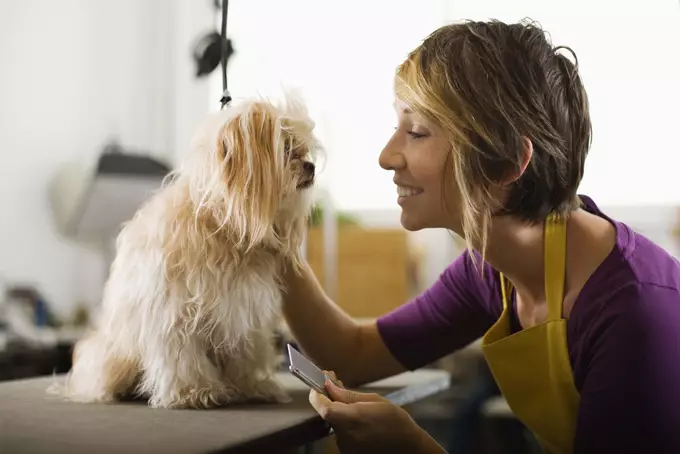Grooming your dog is not simply a matter of aesthetics; it plays a vital role in maintaining their overall health and well-being. By establishing a grooming routine tailored to your dog’s specific needs, you can foster a strong bond while ensuring your furry friend looks and feels their best. Whether you have a short-haired Chihuahua or a long-haired Afghan Hound, the right grooming techniques can make all the difference.
Every dog has unique grooming requirements based on their breed, coat type, and activity level. Recognizing these differences is the first step in becoming a proficient groomer. For instance, short-haired breeds like Beagles or Boxers may require minimal upkeep, often needing only a weekly brushing to keep their coat healthy. In contrast, long-haired breeds such as the Cocker Spaniel or Shih Tzu demand more frequent grooming to prevent matting and tangling. Ignoring these needs can lead to discomfort for your dog and unnecessary grooming struggles.
Observing your dog’s behavior can also provide clues about their grooming preferences. If you notice signs of irritation, such as biting at their fur or excessive licking, it could indicate that their coat needs attention. Regular grooming not only helps to eliminate dirt and debris but allows you to monitor the skin under the coat for any abnormalities that may need veterinary attention.
The experience of grooming should be positive for both you and your dog. Start by selecting a quiet, comfortable space free from distractions. This can begin with a pre-grooming routine such as taking your dog for a walk or engaging them in play to expend some of their excess energy. Choosing the right time is also crucial; aim for moments when your dog is relaxed and content.
During the grooming session, keep the initial interactions brief—around five to ten minutes—which can gradually increase as your dog becomes more comfortable with the process. Patience is key; approach sensitive areas, such as the paws, ears, and belly, with gentleness and care, allowing your dog to acclimate to being handled in those spots. During this time, shower your dog with praise and small treats to strengthen their association with grooming as a rewarding experience.
Each dog coat type requires specific grooming tools and methods. For short-haired breeds, a soft bristle brush can effectively eliminate dead skin and loose hair. Performing a weekly routine with this type of brush is usually sufficient to maintain a clean and healthy coat.
For medium-length or thick-coat dogs, implementing regular brushing schedules is essential to prevent mats and tangles. A slicker brush works wonders on breeds like Golden Retrievers or Siberian Huskies, and it’s important to pay special attention to areas prone to matting.
Long-haired breeds require daily grooming to maintain coat health. Using a slicker brush followed by a bristle brush can help detangle and smooth the hair. Ensure you also focus on less-visible areas, such as behind the ears and around the paws, where tangles often hide.
Bathing your dog is another critical aspect of their grooming routine. Generally, dogs should be bathed every three months or as needed if they frequently play outside. Always opt for mild, pet-safe shampoos, ensuring no harsh chemicals irritate their skin. Prior to bathing, brush your dog to remove dirt and mats, allowing for a more effective washing process.
As you prepare for bath time, a non-slip mat in the tub can prevent accidents. Use lukewarm water and aim to wash from the back towards the head while avoiding direct contact with sensitive areas like eyes and ears. Post-bath, a thorough drying process is essential to prevent them from rolling in dirt the moment they’re let outside.
Nail trimming and ear cleaning are often considered the less enjoyable grooming tasks. However, these aspects are critical for your dog’s health. Regular nail trims, ideally every few weeks, can help prevent painful overgrowth. Utilize high-quality nail clippers and take care to avoid the quick, which can cause bleeding if accidentally clipped. If you’re concerned, consult with a veterinarian or professional groomer for guidance.
For breeds prone to ear infections, such as Basset Hounds or Cocker Spaniels, regular ear cleaning is crucial. Use a vet-approved solution to gently clean the external ear without pushing debris deeper into the canal. Regular checks can help you catch potential issues early.
Establishing a consistent grooming routine from puppyhood is the best approach to create a calm and enjoyable experience for your dog throughout their life. The association between grooming and positive reinforcement can help alleviate the anxiety many dogs feel during these sessions. By using patience, rewards, and appropriate tools, you can foster a grooming environment that nurtures both your bond with your dog and their overall health. Remember, grooming is not just chore; it’s an opportunity for connection and care.

